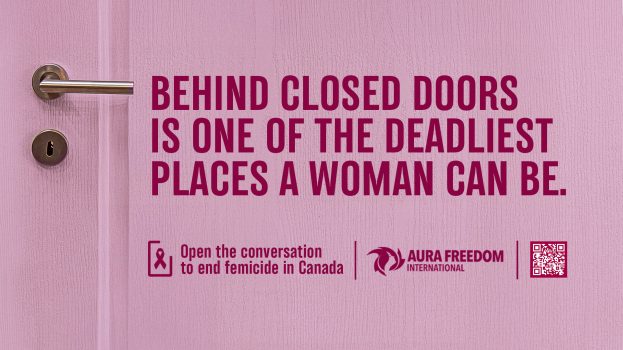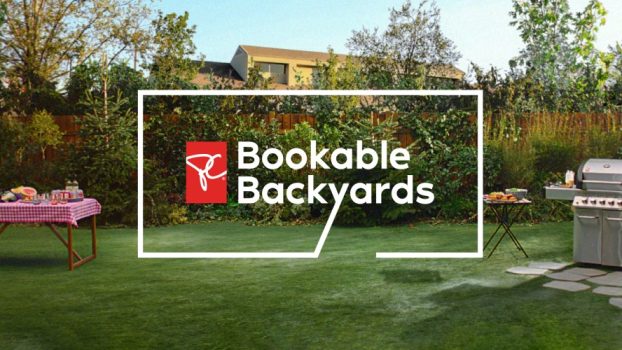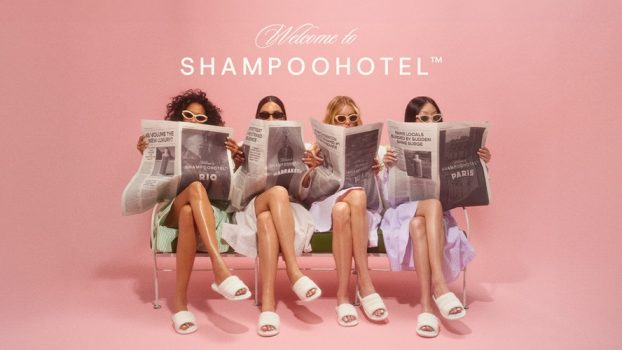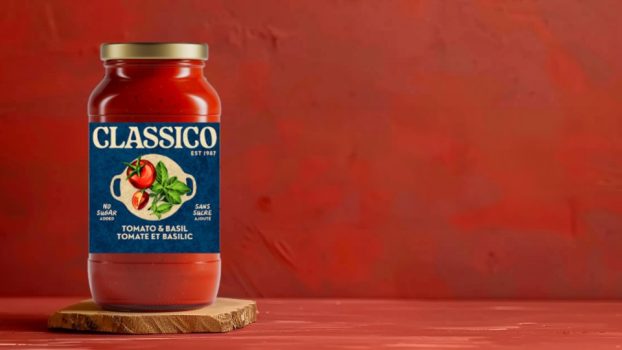A regular lipstick or a simple face powder just doesn’t cut it anymore. As women demand more mileage from their cosmetics, manufacturers are ploughing more money into research and offering innovative features to make their products stand out on the cluttered cosmetics counter.
Whether it is a lipstick that lasts all day, miracle curling mascara, or a Hershey’s flavoured lip gloss, products with added selling-value are becoming the new norm.
And for some companies the lucrative teen demo is the target of many of these new ideas. Research by Vancouver-based teen-targeted cosmetics company Caboodles, found that the average disposable income of a Canadian teen girl is $120 per week, 25% of which is spent on cosmetics. No wonder many marketers are ‘aging down’ their marketing efforts.
‘We are seeing a whole trend for getting older younger,’ says Maureen Atkinson, retail analyst at Toronto-based J.C. Williams Group. ‘Tweens want to be like adults, so we are seeing a marketing push in their direction from products which have traditionally been considered adult products.’
Toronto-based brand consultancy and packaging design expert Strategies International has also observed a strong shift towards targeting the younger consumer with new cosmetics launches. ‘Kids aged eight upwards are a lot more savvy than past generations because of the proliferation of information that’s available to them through the Internet and TV,’ says Kelly Frances, manager of new business development. ‘They have more money and they know what they want. There is definitely room for an increased focus on marketing to this group.’
The best way to attract the tweens and younger teens of today, in Frances’s opinion, is through brightly coloured packaging and interesting structural shapes. However, she warns against trying to be too trendy. ‘Tween fashions change very quickly. If packaging is too trendy, it risks being uncool in a few months’ time.’
Last year, Strategies International came up with a new re-branding concept for the Lachine, Que.-based tween line, Caroline Cosmetics.
‘This brand didn’t have a tremendous share of the market, so we created a new package design that would speak to the tween market with exciting icons to illustrate what each product is used for,’ says Frances, who adds that since the launch the range has seen a marked increase in sales.
And Caboodles, which launched in 1999, is another Canadian teen brand.
‘Caboodles products are engineered to attract teens,’ says Maria Kennedy, president and creative director at Karacters Design Group, the Vancouver-based division of Palmer Jarvis DDB, which created the brand identity around Caboodles. Packaging is designed to reveal the colour of the product, with a slick and sophisticated design. Advertising takes place primarily through teen magazines, including Seventeen, Teen People and Cosmo Girl. The brand makes extensive use of a teen panel to keep in touch with the latest desires and trends.
‘Teen girls always want to have the latest, hottest new product,’ says Kennedy. ‘They shop first for colour but they also want to have a lot of sparkle and glitter.’
Teen-targeted brand, Maybelline, from Montreal-based L’Oreal, has just added a new product to its Wet Shine range, which follows this line of thought. Wet Shine Diamonds lip colour launched in Canadian drugstores and mass retailers in May, accompanied by TV and magazine advertising from Gotham in New York (a division of McCann-Erickson Worldwide). The product contains ‘silver-toned diamond-cluster pearls’ and a ‘shine-boosting polymer’ to reflect light and give the appearance of diamond-coated lips, in a variety of colours.
And in September, Procter & Gamble’s Cover Girl will be introducing shimmer gloss sticks in shades like copper and quartz that women can apply as a top-coat over the brand’s Outlast lipstick. This launch will be introduced with a multi-media ad campaign in Canada this fall, to be created by Grey Worldwide in New York.
Cover Girl has recently added another eight colours to the Outlast range that launched in Spring 2001. The product, which is being marketed to young women as well as teens, claims to provide eight hours of lasting lip colour, which can survive the toughest tests, including eating, drinking and kissing.
‘Our consumer research found that women want something more than just a standard lipstick these days,’ says Stefani Valkonen, external relations manager for health and beauty at Toronto-based Procter & Gamble Canada. ‘Outlast is long-lasting and moisturizing.’
Outlast has been marketed extensively since its launch through TV and print in major magazines and in-store at mass retailers and drug stores. Cover Girl is also currently testing a long-lasting perfume in its British lab, although Valkonen says this is not yet under consideration in Canada.
And L’Oreal’s Lancôme brand has just launched a new flavoured lip product this spring to target teens and young women. Juicy Tubes combines lip gloss with colour and comes complete with a fruit-flavoured taste.
The product was launched due to demand, making use of research from Port Washington, N.Y.-based NPD Beauty Trends, which found that the U.S. lip gloss category saw an increase of 60% from 2000 to 2001. And Lancôme’s internal research found that 85% of Canadian women aged 13 to 24 wear lip gloss.
‘This market is looking for playful makeup products that are in sync with the latest fashion trends,’ says Sophie Bélanger, product manager for Montreal-based Lancôme. ‘To answer this need, each shade of Juicy Tubes takes on its own personality, with its own unique perfume and sugary taste.’
The product is being advertised through magazines using Lancôme’s new spokeswoman, Elisabeth Jagger (daughter of Mick Jagger and Jerry Hall), who Bélanger says was chosen for her glamorous face, to express the modernity of the brand. The ads were created by Publicis Paris and adapted by Publicis Montreal for Canadian use. An Internet viral contest to win a girls’ night out in Montreal has also been created around the launch.
And it’s not just the teens that are drawn to innovative ideas. Many cosmetics companies are spending a great deal of time and money on consumer research to come up with a product to match the latest trend or desire among consumers of all demographics. New York-based Estée Lauder for example, spent 1.3% of its total US$4.62 billion in international sales on R&D for the fiscal year ending June 2001, and L’Oreal regularly spends around 3% of its total sales on R&D.
‘With increasing competition, manufacturers need to have a unique selling position to be able to grab market share,’ says Strategies International’s Frances. ‘When one manufacturer comes up with a long-lasting lipstick, it is never long before all the competitors follow suit.’
And true to form, a slew of new long-lasting products is set to launch. Curiously, the other trend in vogue is the desire for makeup to look natural.
This month the Estée Lauder brand MAC will be rolling out its new Lustre Lipstick product in Canada and the U.S. ‘When we were looking through our offerings, we realized that we needed something that was more breakthrough and more in line with what women want today,’ says Tara Cohen, director of new product development at New York-based MAC.
The light and easy-to-apply product in 14 shades contains butter and soybean extract to add a moisturizing element and to suit the current trend for natural-looking cosmetics, Cohen says.
Another product that launched in May is MAC’s new Studio Tech foundation, which claims to go on as a solid but set as a liquid on the skin to give a light, non-cakey covering. Cohen says this product is also designed to suit the desire of women today to create a natural look with their makeup. And also just launched is the long-lasting liquid eye shadow, Sheer Colour Extracts. Cohen says the manufacturer relies on word of mouth and editorial coverage to promote the new products. In-store makeup artists also help push new product launches.
With every new product launch, MAC carries out a 50- to 100-person panel test, using professional makeup artists. ‘Products are so much more advanced now [that] you have to come up with something fairly innovative in order to stay competitive,’ says Cohen.
Also following the trend for long-lasting cosmetics, Lancôme recently launched its Rouge Attraction lipstick, which contains an agent that allegedly ‘creates an active link between colour and high-shine oil’ to ensure a long-lasting effect.
Lancôme’s 2001 research found that more than 70% of Canadian women look for hydration and long wear in a lipstick, a finding that led directly to the development of this product. Traditional media (by Publicis) forms the basis of the marketing strategy, focusing mainly on the Ontario and Quebec markets.
And in August Lancôme plans to launch a lengthening and curving mascara range, which claims to give your lashes 30% more length with a 30-degree curve. Flextencils will launch in a curved package to reflect the promise of the product. The product will be promoted with advertising in major magazines as well as with magazine inserts for a free sample offer.
Ahead of the curve, recent research by Estée Lauder’s new product development group and research department, together with feedback from consumer focus groups, led to the introduction of a lash-bending mascara in May. Illusionist claims not only to curl lashes but also to keep them curled, a feature that the research indicates is demanded by today’s women.
‘Estée Lauder Research constantly works to develop innovative technologies which ultimately provide consumers with cosmetics options that meet their ever-changing needs, sometimes before they even know what those needs are,’ says Mena Smith, Regional VP of Toronto-based Estée Lauder Canada.
Another new product by Estée Lauder, which launched in March, is So Ingenious multi-dimensional powder makeup that uses ‘QuadraColor’ technology to allegedly provide a natural look in any light. ‘Our research found that the natural look is an important beauty trend, and convenience and portability are key considerations for busy consumers,’ says Smith.
Both new products are being heavily advertised through print ads in fashion and beauty magazines in Canada, created by the company’s in-house advertising team, in conjunction with A/R Media, as well as through advertising on U.S. TV networks, which provides additional spillover for Canadian consumers.
Sampling also plays a big part in the introduction of the new products, together with in-store promotions and specialized demonstration stations.
‘Consumers today are very product savvy and demand a lot from their products,’ says Smith. ‘The wow factor is very important.’
A touch of sweetness
It’s not only the cosmetics companies that are targeting consumers with innovative new ideas in the beauty aisles. Some candy companies are making a foray into cosmetics for the first time with unusual product extensions to attract the teen and tween demographics.
The Hershey’s name will soon be endorsing Bubble Yum lip balm in ballistic berry, original and sour cherry flavors. A licensing agreement with the candy-maker will allow Lotta Luv, a division of New York-based gift accessories company, Designs By Snaffles, to use the Hershey’s name on its product designs. Hershey’s flavoured lip-gloss, body wash and bubble bath will also be adorning the cosmetics counters in the U.S. later this year. The new products will initially launch only in the U.S, although Laurens Gerling, marketing manager at Hershey’s Canada, says a Canadian launch is under consideration.
Meanwhile Tootsie Roll is preparing to roll out a lip-gloss wand with a fruit flavour on one end and a bubble gum flavour at the other, also through a licensing agreement with Lotta Luv.
According to Kelly Frances, manager of new business development at Toronto-based brand consultancy Strategies International, the brand extensions are likely to be popular among teens, although she advises a strong marketing campaign outside of the cosmetics aisles, in order to raise awareness among the target demo.























